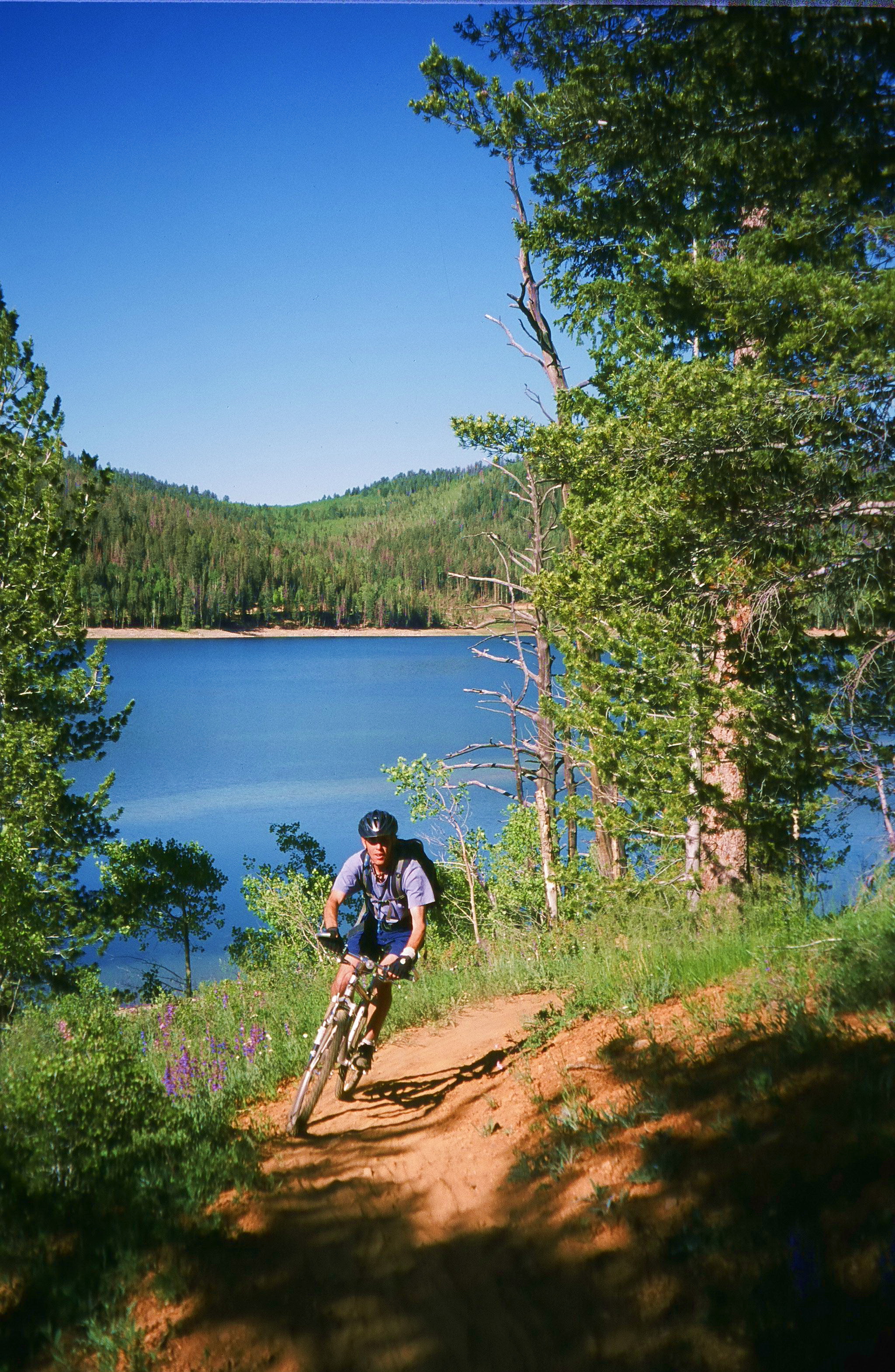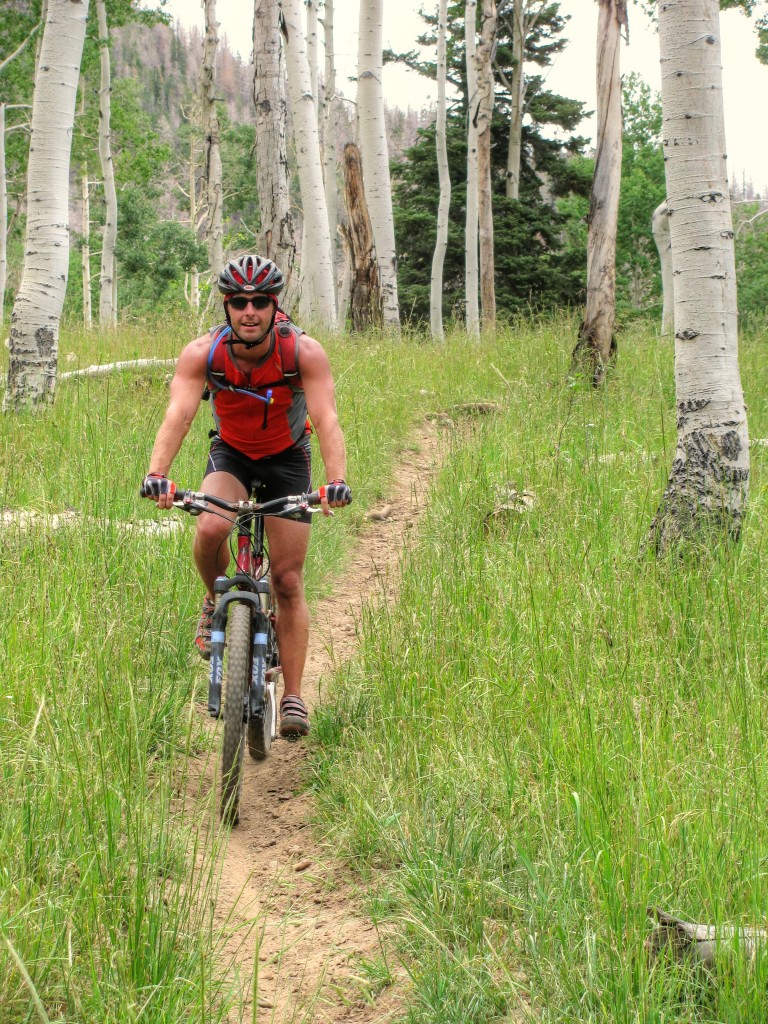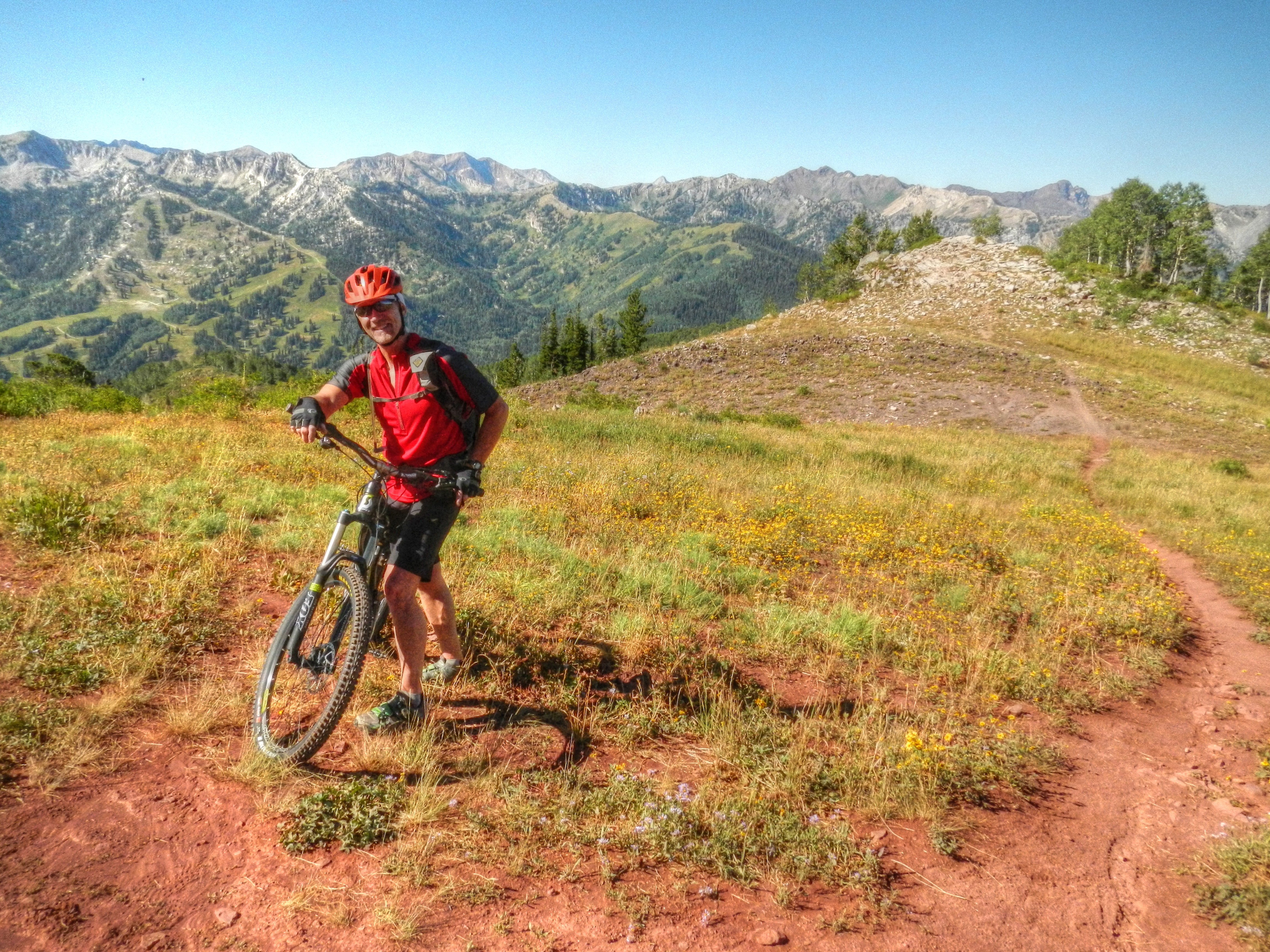
The Coolness
Growing up east of the Rocky Mountains leaves a person unprepared for the effects of high elevations above sea level. In the middle of summer heat and humidity, the distances that you would have to drive to the north to experience a 40° temperature drop anywhere east of Kansas would be in the thousands of miles. Around here you can make that drive on a quarter tank of gas, and not break any traffic laws in the process.
I left St. George in the late morning of mid June, as the temperature was cresting the final few double digits, and began an inexorable climb above the sweltering zone of the low Mojave desert. By the time I reached the Silver Reef exit on the interstate the temperature was already cool enough to turn off the air conditioner and roll down the windows (though conventional wisdom now says that this is less fuel efficient than keeping the AC running). Passing through Cedar City and beginning the climb up Cedar canyon, I actually had to progressively roll the windows up due to the wind chill that I was encountering.
Though I have driven this route hundreds of times over the past couple decades, I am always dumbstruck by the speed at which the landscape changes over so few miles. Crossing over the Hurricane fault and climbing up onto the Colorado plateau is a journey through 100 million years of geology, and a graduate course in ecology at the same time. The rate of ascent is evidenced by the speed at which the vegetation changes from Utah juniper to bristlecone pine over the course of 20 miles. The color green changes from sage to spruce and the tans and browns are left behind in the flats of the Great Basin; replaced by riots of wildflowers in the sudden meadows.
The road finally flattens and begins to follow the contours between cinder cones and vast lava flows, and yet flat is not necessarily the word that springs to mind up here, as there are peaks, mesas, and summits in every direction covered with spruce, columbine and waves of volcanic blocks that stretch to the horizon. Small dirt roads depart from the pavement disappearing into the fir and aspen and leading to who knows where. I try to explore one of these on every trip up here, choosing a random track that heads into the forest and onto the unknown. Usually these roads quickly degrade towards the high clearance side of 2wd, and often cross over the point of four. Mostly they lead nowhere special and yet each of them offers an opportunity to flex muscles of discovery that have atrophied since the closing of the frontier, and admittedly the end point is also a great place for a nap in the cool mountain air.
Perhaps the last thing one expects to encounter at the top of a mountain is a lake. With its propensity to flow downwards, water would seem to have little opportunity to stay put here, as down is nearly all there is. So as highway 14 turns through an aspen grove, the blue water of Navajo lake always comes as a surprise. The fold in the mountain that holds the lake is blocked at the far end by a lava flow, without which there would likely exist only a winding stream and grassy meadow. Yet the basalt blockage also prevents this particular lake from having any visible outlet at all, leaving only volcanic cracks in the lake bottom as the means of escape. The water flows nearly a mile underground before it exits from a cave on the rim of the plateau. This is the birth of the North fork of the Virgin River, and from here it tumbles down the slope of the Markagunt plateau, carves the incredible canyons of Zion national park, and the Virgin River gorge before feeding into lake Mead, 8000 vertical feet below its spectacular beginning.
I come up here as often as our demanding guiding schedule permits, both to escape the oppressive heat and to enjoy some of the most beautiful mountain biking in the region. The single track trail that surrounds Navajo lake is the perfect diversion in just about every meaningful way. Departing from the Te-ah campground at the far end of the lake, the trail winds back and forth across a contour line as it dives into spruce and aspen woods and alternately emerges onto a wildflower studded meadow above the lake. A few up hills keep things honest, but generally I pedal as much as coast, the only disappointment being that it does not go on forever. At the far end of the lake the trail actually continues through the lava flow plug via what is an amazing feat of trail building. Vast amounts of gravel and volcanic cinders were brought in and used to create an elevated trail over the jagged rocks that would puncture both tires and skin. After crossing the North fork road the trail slowly climbs up onto a hillside before it begins to parallel both the road and the lake. The riding always seems darker on this side as the forest is dense fir and spruce, the shade is deeper and the soil richer.
Swooping through a shady tunnel of trees and plowing through the hidden pockets of coolness on a summer morning is an incredible experience that comes as close to something spiritual as I believe I can have while riding a bicycle. At this point the trail offers a wide range of loop options, from bailing onto the north fork road to climbing up onto the Virgin River Rim trail with a couple of nuanced options in between those two extremes.
Departing the Navajo loop trail and climbing to the rim via the Navaho trail (confusing) is the most punishing and brutal of these choices. I have found many trails that were harder that I could not ride, but none so barely ride-able and yet at the same time so relentlessly steep and bereft of oxygen. It is a battle of will power and pride verses gravity and altitude, and every time I ride here, I actually both dread and anticipate the point at which I have to decide to take on the challenge or pass it by for an easier option.
9000 feet above sea level is over a mile higher than where I live in St. George, and the price paid for the cooler temperatures up here is the lower air pressure, and fewer oxygen atoms that you get with every lungful of air. Just walking around up here makes me breath harder, and riding a mountain bike uphill often seems an absurdity. As the trail ascends to the rim via endless uphill’s punctuated by steeper switchbacks, there are no moments of repose, or reflection, the only relief is to pedal the less steep sections slowly to recover for the sprint through the switchbacks. I always think of these tactics as the wisdom of the old bull.
Slowly the top of the mesa begins to take shape as sky begins to backdrop the remaining trees, and eventually there is no more up to climb, just the never ending Virgin River rim trail that snakes along the top of the plateau from Strawberry point down to Woods Ranch in Cedar canyon. At 33 miles this trail is a major undertaking as a day ride, few people do the entire stretch in one go, and those that do are very happy to go a few days without sitting on a bike seat afterward.
I have referred to the portion of the Virgin River rim trail from the top of Navaho trail down to the North Fork road as the “nirvana section” for years now, as it was a seminal experience in my early mountain biking career, and has since become a bit of an annual pilgrimage. As the trail leaves the rim of the plateau and begins to plunge towards the lake, conscious thought and mental chatter abruptly cease as instinct takes the reins of control. For me it is not really meditative in the manner that I lose my sense of self, more that I can actually feel my limbic system take control and for the next 15 minutes the reptilian brain has command. If I do manage a conscious thought while weaving between trees, over roots, and too close to fallen logs, it is usually something along the lines of “Holy shit, be careful! You could really get hurt here” -to which the reptile replies- “and it would be totally worth it!” At some point I become an observer of sorts, I can hear the heavy breathing and sense the muscles twitching and burning but it is all a somewhat detached reality witnessed by an observer that no longer identifies with the physicality of the body/bike combination racing through the woods. It is that sense of detachment, that feeling of flow that is the addictive drug of these pursuits. It seems to manifest during moments of practiced physical movements in an envelope of risk, where your body is under duress and yet on auto pilot using encoded engrams to fire specific muscle groups automatically and without thought. One movement blends seamlessly into the next as the flow of events arrive at a rate that although challenging seems feasible, with the conscious thoughts of what I am experiencing just along for the ride.
Soon enough the trail dumps itself onto the North Fork road and in short order I am back at the starting point, where there is a cold beer in a cooler to look forward to. As fun and rewarding as this ride has been over the years, savoring a cold one while watching the sun sparkle on the blue waters of the lake is a worthy reward, especially when I consider that it is probably over 110° in Saint George at that moment.
Written by Todd Goss
-Guide and Owner at Paragon Adventures

